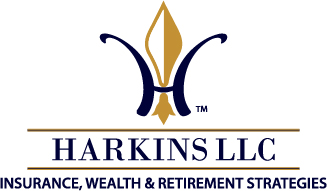By Ian Berger, JD
IRA Analyst
The recently-enacted “Coronavirus Aid, Relief, and Economic Security Act,” or CARES Act, includes special tax relief for IRA and company plan withdrawals made in 2020 and for company plan loans.
Who gets relief? Both the distribution and plan loan relief apply only to “qualified individuals.” Not everyone meets this definition. The definition includes:
· individuals diagnosed with the SARS-CoV-2 or COVID-19 virus by a test approved by
the CDC;
· individuals whose spouse or dependent is diagnosed;
· individuals who experience “adverse financial consequences” on account of:
> being quarantined;
> being furloughed or laid off or having work hours reduced;
> being unable to work due to lack of child care; or
> closing or reducing hours of a business owned or operated by the individual.
The law gives the Secretary of the Treasury the authority to expand this definition.
Which distributions get relief? If you are a “qualified individual,” up to $100,000 of distributions from IRAs and company savings plan made in 2020 are eligible for relief. IRA and company plan distributions are aggregated for this purpose.
What are the relief provisions for withdrawals? There are three withdrawal-related relief provisions. The first waives the 10% early distribution penalty. That penalty normally applies to IRA or company plan withdrawals if you are under age 59 ½, unless an exception applies. The CARES Act adds a new exception to that penalty but only if you are a “qualified individual.”
The second provision provides relief if your financial situation improves and you no longer need the withdrawn funds. “Qualified individuals” can repay, tax-free, 2020 withdrawals to an IRA or company plan. Repayment must be made within three years of the date the money was received. If you have already paid taxes on a withdrawal that you later decide to repay, you can file an amended tax return to recover the taxes.
In most cases, your withdrawal will be taxable. To cushion the blow of getting hit with the entire tax in the year of distribution, the CARES Act permits you to spread any federal income tax over three years.
What are the relief provisions for loans? If you participate in a company plan that allows loans, the CARES Act increases the maximum amount of any new loan taken by September 23, 2020. If you are a “qualified individual,” you can borrow up to 100% of your account balance – but no more than $100,000 (reduced by the amount of any outstanding loans). In addition, you can get a break on repaying existing loans. For repayments normally due between March 27, 2020 and December 31, 2020, you can delay repayment for a year.
It appears that these tax relief provisions are available from your plan only if your employer allows it. We expect that most companies will.
https://www.irahelp.com/slottreport/cares-act-relief-retirement-distributions-and-plan-loans

 Jim E. Sloan is the founder of Jim Sloan & Associates, LLC, a comprehensive wealth management firm located in The Woodlands, Texas. Jim is an Investment Adviser Representative providing investment advisory services through AE Wealth Management, LLC, an *SEC Registered Investment advisor. This relationship allows Jim Sloan & Associates, LLC to bring institutional-level experience, practices, and pricing to individual families. Jim is also a licensed insurance agent in Colorado and Texas. This is Jim’s sixth financial book and is aimed at helping investors become financially informed. Jim is a U.S. Army veteran, native Houstonian, and lives in the Woodlands, volunteers with several local charities, believes in the name of Jesus, loves to travel, and enjoys most things outdoors.
Jim E. Sloan is the founder of Jim Sloan & Associates, LLC, a comprehensive wealth management firm located in The Woodlands, Texas. Jim is an Investment Adviser Representative providing investment advisory services through AE Wealth Management, LLC, an *SEC Registered Investment advisor. This relationship allows Jim Sloan & Associates, LLC to bring institutional-level experience, practices, and pricing to individual families. Jim is also a licensed insurance agent in Colorado and Texas. This is Jim’s sixth financial book and is aimed at helping investors become financially informed. Jim is a U.S. Army veteran, native Houstonian, and lives in the Woodlands, volunteers with several local charities, believes in the name of Jesus, loves to travel, and enjoys most things outdoors.